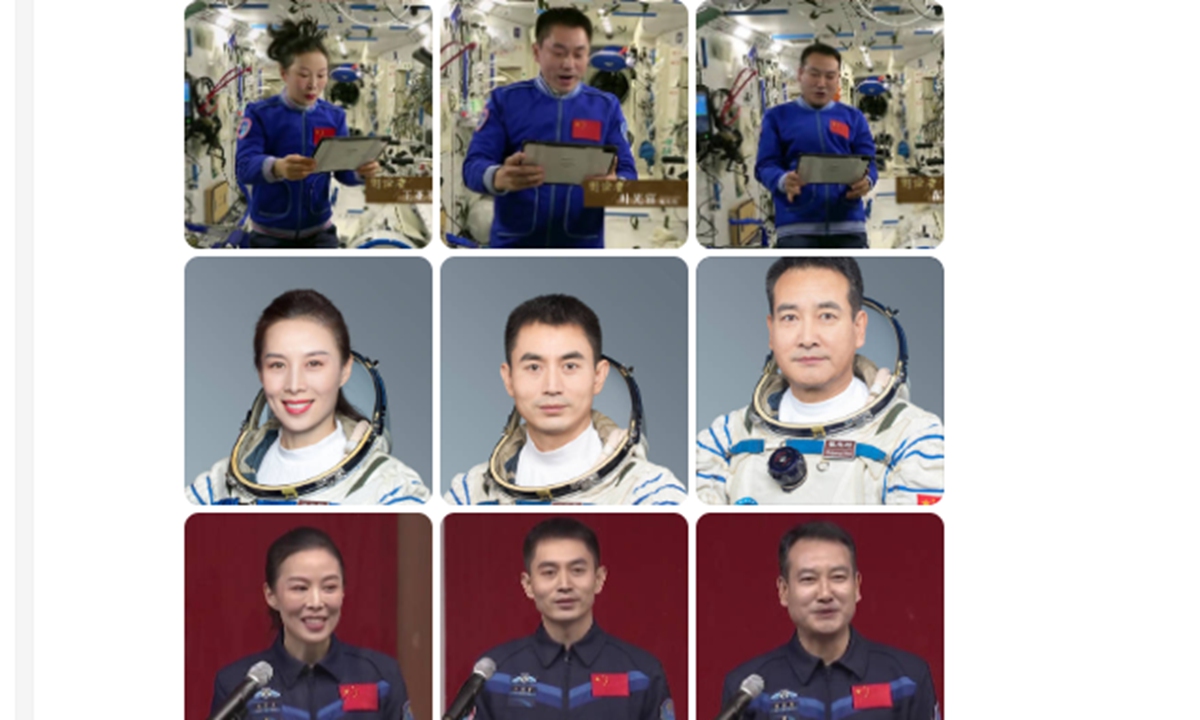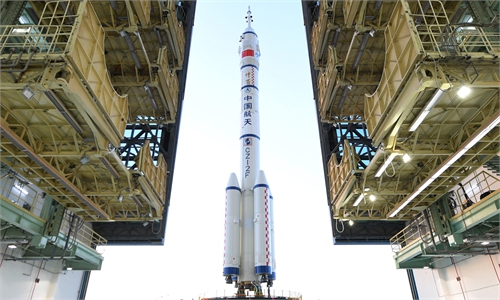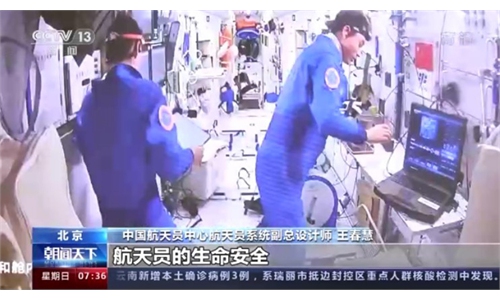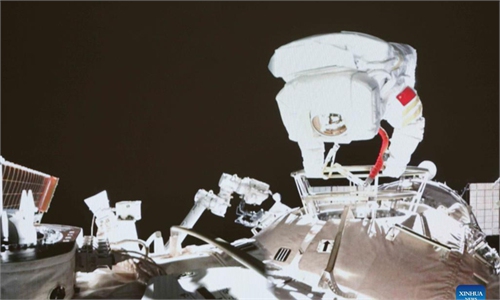Shenzhou-13 crew one month into record space stay, ‘puffy face’ a common phenomenon among astronauts

Puffy face of the crew of the Shenzhou-13 spaceflight mission Photo: a screenshot from Sina Weibo
The Chinese public on Tuesday sent their blessings to taikonauts Zhai Zhigang, Wang Yaping and Ye Guangfu - the crew of the Shenzhou-13 spaceflight mission, who have lived and worked in Tianhe space station core module for exactly one month since they moved into the orbital craft on October 16.
Planned to last six months, Shenzhou-13 mission is the longest space stay for a single spaceflight mission in China's history. Some 30 million Chinese netizens participated in online discussions of the event on Tuesday, sending caring messages to the space-going trio.
The sharp eyes of the Chinese public grew curious when seeing the latest images of the crew, saying they are wondering if the food onboard is so yummy that the three looked puffy on camera.
"In zero gravity, fluids inside the human body would go upward into astronauts' faces and heads, causing them to look swollen. That's a moon face, which is a common phenomenon not only for taikonauts but also for every astronaut in the world," Pang Zhihao, a senior space expert based in Beijing, told the Global Times on Tuesday.
Two-thirds of people's bodies are made up of fluids. On Earth, gravity pulls most of this toward legs. The extra fluid in the head may lead to blocked noses and sinuses, but once the astronauts are back on Earth, they return to their normal appearance, according to the BBC.
To feel better and relieve the "puffy face syndrome," Pang suggested that a negative pressure device may come in handy, as it could reverse the upward movement of fluids.
One of the highlights of the first month's stay in the Tianhe station was the successful execution of the Shenzhou-13's first spacewalk, during which commander Zhai and Wang, the female taikonaut, stepped out of the core module and completed all planned tasks in six and a half hours.
Wang thus became the first Chinese woman to walk in space, winning applause at home and abroad. The third member and the youngest of the Shenzhou-13 crew played an important supporting role inside the cabin in the process.
The China Manned Space Agency (CMSA) said in a statement at the time that the spacewalk, the first of the Shenzhou-13 mission and the third during the country's space station building period, has further verified the performance of China's home-developed spacesuit, the ability of the astronauts to work with the robotic arm, and the reliability and safety of the supporting system.
According to the CMSA, the Shenzhou-13 crew will carry out another one or two spacewalks during the mission.




